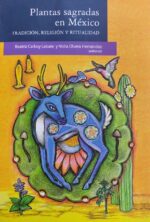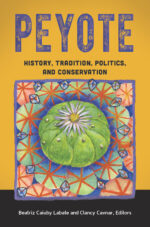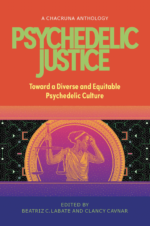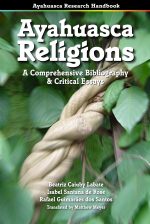- Why Land and Ecology Matter for Global Psychedelics - January 25, 2024
- Coming of Age in the Psychedelic Sixties - March 15, 2022
- Psychedelics, the War on Drugs, and Violence in Latin America - March 10, 2022
Land Rights and Ecological Regeneration—Why the Psychedelic Community Should Care
The 18th through the 20th centuries easily mark one of the most significant periods in human and environmental history, as Western European imperial expansion and settler colonialism incentivized the study and the incorporation of the botanical wonders found in what often came to be labeled as ‘the tropics.’ From barks to seeds and pods, botanists embarked on a series of missions that carried both political and economic incentives and were often financed by companies interested in the nascent commodity market of ‘New World’ medicines and novel luxury items like tobacco, sugar, and chocolate. These plants and their new globalized uses were revolutionary and, as such, created impressive wealth that cemented political and economic dynasties, both North and South.
Tragically, the ecological landscapes and the Indigenous communities of Latin America and the Caribbean that fostered these plants and knowledges experienced a drastic inversion by becoming precipitously impoverished and susceptible to the aggressive whims of the global market. As a professor of geography in California, I find it important to share stories of the commodities that have become so commonplace and may no longer even hold the exotic connotations of when they first hit the marketplace.
This history and the enduring socioecological impacts found in the trajectories of these transformed plants are important teaching moments.
This history and the enduring socioecological impacts found in the trajectories of these transformed plants are important teaching moments, particularly as we continue to see emergent commodity items with a noted revolutionary potential. While Peruvian cinchona bark was fundamental to acquire quinine to treat malaria in the 16th through 18th centuries, psylocibin and mescaline have become sought after today to aid with the complex landscape of mental health disorders present in this early 21st century.
I grew up between Guadalajara and the Bay Area, the daughter of a couple who met at the height of the psychedelic movement of the 1960s and who subsequently dedicated their lives to environmental and cultural work with the diverse Wixarika communities of Western Mexico. Between the salons held between my parents and their remarkable friends like Ann and Sasha Shulgin, and the territorial activism my father led with his Wixarika colleagues, the task of understanding the relationship between human consciousness, ecology, and praxis was always present.
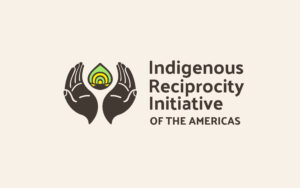
Discover the Indigenous Reciprocity Initiative of the Americas
From the 1970s through the 1990s, my parents had helped establish and run three non-profit foundations in Jalisco dedicated to Wixarika health, art, and ecology. In 2001 Juan and Yvonne Negrín founded the Wixarika Research Center (WRC) in Oakland, California, to continue their dedicated work with select projects that advance Wixarika cultural and territorial autonomy. When mining concessions were granted by the Mexican government to Canadian transnationals in 2010 in the sacred pilgrimage destination of Wirikuta in San Luis Potosí, the WRC actively participated in efforts to raise public awareness of the environmental impacts of mining and to support the Wixarika delegations working to halt the concessions.
During this period, I conducted research with non-Wixarika allies who had joined efforts to protect sacred Indigenous land. My findings led me to understand the central role that peyote has in attracting teiwarixi (non-Wixaritari) to Wixarika culture and their eastern pilgrimage place in San Luis Potosí. In fact, peyote, along with Wixarika ‘shamanism,’ seemed to play a crucial role in helping the Wixarika galvanize an international support network that would eventually lead to a partial victory that included mining exploration moratoriums and one canceled contract. However, according to some critics, the celebrity visibility and peyote-centered public discourse of the movement brought about a jump in peyote extraction by a new wave of international visitors, while the interethnic coalition was unable to prevent the expansion of agroindustry that has now overtaken the lowlands where peyote grows.

Through this activism and prior to his death in 2015, my father spoke of the need to consider the lives and livelihoods of the small farmers or campesinos who lived in the high plateaus of San Luis Potosí. These humble families were and continue to be important guardians of this sacred biodiverse region—caring for its flora and fauna, planting their milpas (cornfields) when sufficient rain blesses them, and welcoming the Wixarika pilgrims that cross through multiple ejidos (commonly held lands) and municipalities. While the high plateaus known in Mexico as the Altiplano Potosino have always had small and dispersed populations, in the last three decades there has been a marked and continued decline in the rural inhabitants who no longer are able to survive on their lands because of the increasingly difficult climatic conditions that are coupled with the government’s tacit support of land privatization. The latter has permitted various scales of capital to become present: industrial egg, tomato, cucumber, and bell pepper farms now dot the entire protected area. In these areas, all endemic species have been deforested, including the peyote cactus that relies on the ability to grow over long periods to reach its maturity.
In 2021, I turned my attention much more closely to the opportunities that could be found in articulating the ecological and cultural knowledge and practices of Wixaritari, campesinos and some longtime non-rural, non-Indigenous allies. I had spent over a decade collaborating with Wixarika university students, many of whom became active in the defense of Wirikuta but had never had the chance to travel to this sacred land and witness both the biodiversity of the landscape as well as the visible and invisible encroachment of new forms of land use and ownership. During my relatively few years of visiting the region, I had already seen dramatic change as the beauty of the semi-desert’s flora ceded to greenhouses and industrial grain silos. Conversations with locals and the new adobe constructions close to the area’s “peyote gardens” also pointed me to the preoccupying effects of Mexican and foreign individuals unwittingly pressuring poor farmers to rent or even sell their ejido parcels for the scattered peyote-centered retreats that have spurred a clandestine economy.
The complex socioeconomic and political patchwork in Wirikuta requires various scales and forms of action to defend and regenerate this sacred and biodiverse place.
The complex socioeconomic and political patchwork in Wirikuta requires various scales and forms of action to defend and regenerate this sacred and biodiverse place. My research and the Wixarika Research Center’s background supporting training for ecologically driven initiatives attentive to Wixarika economic, cultural, and political values, led us to facilitate three summer gatherings in Wirikuta. These gatherings took place in July 2021, 2022 and 2023 with the explicit objective of providing an opportunity for Wixaritari from several communities to travel to Wirikuta and participate in free trainings alongside local small farmers. The activities we led during these three years of workshops centered around the reforestation of endemic species–like the mesquite tree–and the various derivatives these native plants have for generating a sustainable local economy. Various organizations with a history of work with Wixarika and Altiplano communities have partnered in these gatherings by leading agroecology and environmental technology trainings and dialogue, while also integrating games for adults and youth. Speakers and trainings have also been imparted by residents of the Altiplano and Wixarika women—bringing crucial frameworks for understanding the role that gender equality and land tenancy have for sustaining ecologically and economically healthy communities.
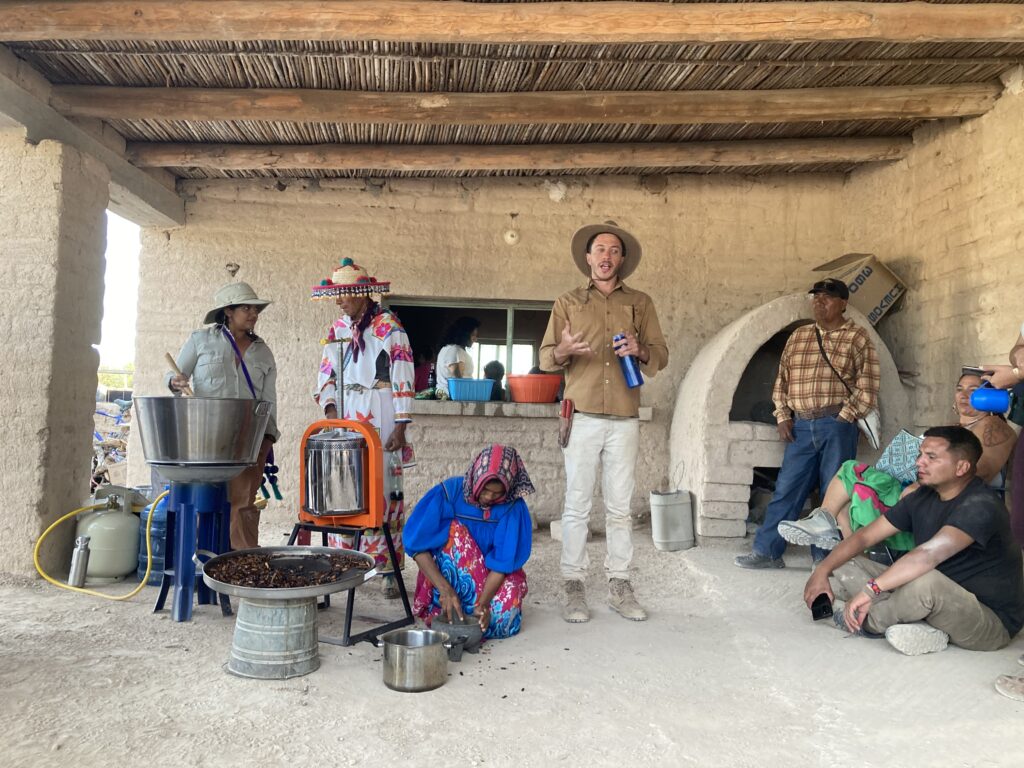
One of the highlights of the 2023 gathering was the participation of Comca’ac (Seri) elder, María Luisa Astorga, whose age and long journey from Sonora to San Luis Potosí did not deter her from sharing songs and stories about the cherished mesquite tree that is also native to the Sonoran Desert. After sharing conversation with the elementary school children of the ejido who also learned to make mesquite pancakes and ice cream, a list was made of all the tree’s properties that included nutrition, water retention and shade for its sister plants. At the tail end, one young girl added that the trees that had been planted would also provide branches for swings.
Find more information on the upcoming Psychedelic Culture Conference.
Over these three years, I have witnessed the capacity for an intercultural network of individuals and organizations to unite under a common goal of providing hope to young people who at times face bleak horizons, while also centering the knowledge and embodied practices of elders. Together, we planted dozens of mesquites, nopal cacti, and agaves, but we also listened to music, ate, and danced. Most importantly, we became familiar with the importance of sharing situated land-based wisdom to envision a future where sacred land cannot be bought and sold, and where families can live from their land rather than face uncertain futures elsewhere.
As the mainstreaming of sacred plants continues to evolve and diversify, it is critical to hold space and speak out with honesty about the underlying colonial relations that rural fall farmer and Indigenous communities continue to navigate…
Through my research and participation with the network of allies who have sought to support the cultural and environmental protection of Wirikuta, I have witnessed the desire that many people in the broadly defined “psychedelic community” have for becoming more aware of matters pertaining to Indigenous struggles for land. As the mainstreaming of sacred plants continues to evolve and diversify, it is critical to hold space and speak out with honesty about the underlying colonial relations that rural fall farmer and Indigenous communities continue to navigate as their ancestral plants, water, land, minerals and air become intervened by new actors and uses.

Shop our Collection of Psychedelic T-Shirts.
Art crafted by Trey Brasher.
Selected Sources
Negrín, D. “Colonial Shadows in the Psychedelic Renaissance” in Chacruna, June 9, 2020.
Negrín, D. “Growing Up with Sacred Plants” in Chacruna, November 9, 2020.
Negrín D. “Planting Agroecology in the Sacred Desert of Wirikuta: Renovating the Candles of Life Through Regenerative Agriculture” in The Esperanza Project, January 12, 2022.
Negrín, D. “Water and Power in Wirikuta: Threats New and Old Menace the Sacred Peyote Grounds of the Chihuahuan Desert” in The Esperanza Project, September 29, 2021
Negrín, J. and D. “Wirikuta: Un tesoro a largo plazo ¿O polvo a corto plazo” in Newsweek en Español, November 1, 2011.
Take a minute to browse our stock:
Did you enjoy reading this article?
Please support Chacruna's work by donating to us. We are an independent organization and we offer free education and advocacy for psychedelic plant medicines. We are a team of dedicated volunteers!
Can you help Chacruna advance cultural understanding around these substances?




